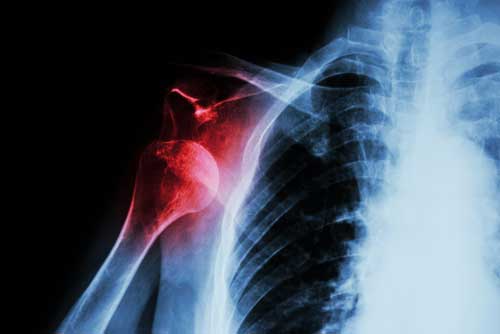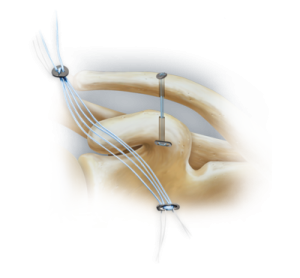Acromioclavicular Joint Dislocation

Acromioclavicular joint dislocation, the dislocation of the acromioclavicular joint (AC joint) is one of the most common injuries of the upper arm. It often occurs in athletic young patients and results from a fall directly onto the tip of the shoulder.
The acromioclavicular joint forms the connection between the collarbone and the shoulder blade. It is essential for stable guidance of the shoulder, especially during overhead activities.
The injury caused by falling on the shoulder leads to a tear in the ligamentous structures, which causes the collarbone to rise (positive piano key sign).
Diagnosis of an Injury to the Acromioclavicular Joint
An X-ray examination is used both to estimate the extent of the injury and to rule out a bone fracture. In some cases, magnetic resonance imaging (MRI) is necessary.
Therapy for Acromioclavicular Joint Dislocation
Minor injuries to the AC joint can be treated conservatively and usually heal well. Severe injuries require surgical therapy.
AC- TightRope
With the minimally invasive treatment method, the dislocation is permanently corrected and the torn ligamentous structures are restored with a special thread-anchor system (AC-Tight Rope). Only a small skin incision is necessary and no follow-up surgery is required to remove the metal.

Special thread-anchor system (AC-Tight Rope)
Alternatively, a tension band osteosynthesis or a hook plate can also be used.
Post-treatment for Acromioclavicular Joint Dislocation
A physiotherapy can be started immediately after the operation. The therapy helps to restore movement patterns and improve strength. Immobilization is only necessary for the first 10 days using a triangular sling.

Dr. Mark Schurz
KONTAKT.